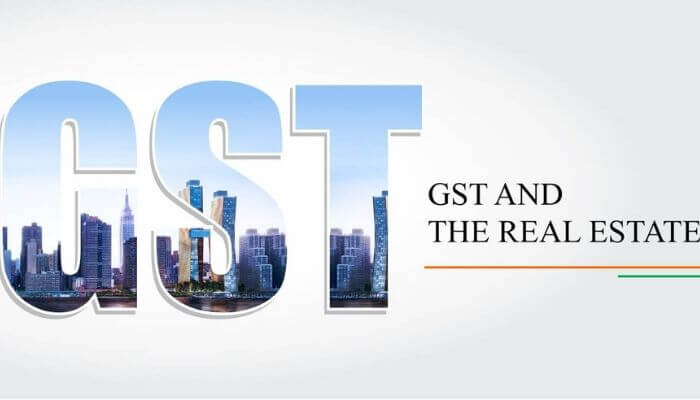
India’s “GST 2.0” reform, taking effect from September 22, 2025, is a game-changing update for the real estate sector. This comprehensive guide reveals what homebuyers, investors, and industry experts must know about the new GST rates, the impact on property prices, construction costs, and how these reforms will influence demand in the housing market—with a special focus on trending keywords like “GST on real estate 2025”, “affordable housing GST rates”, “GST reforms India”, and “property tax changes”. This expert overview is tailored to help content rank for the highest intent search terms in the real estate space
What Has Changed in GST for Real Estate?
India’s GST Council has abolished the old four-slab structure (5%, 12%, 18%, 28%), now favoring a streamlined two-tier GST system: 5% for most essential/merit real estate transactions (affordable and standard homes) and 18% for premium/commercial and select works contracts. GST on cement and key construction materials has also been significantly cut, further reducing project costs. The GST rate for under-construction affordable housing remains at 1% without Input Tax Credit (ITC), while non-affordable units continue at 5% (also without ITC). Commercial property rentals are taxed at 18%, with no GST on residential rentals.
GST Impact on Homebuyers: Lower Prices, Higher Demand
Allied charges such as maintenance above ₹7,500/month or amenities billed separately can attract 18% GST—targeting “GST on RWA maintenance 2025” and “GST on property club house. GST applies only to under-construction properties, making ready-to-move homes (post-Occupancy Certificate) GST-exempt.
Affordable homes (carpet area up to 60 sq m in metros/90 sq m in non-metros and value below ₹45 lakh) attract 1% GST, a key keyword for urban property buyers searching “GST rate for affordable housing 2025”.
GST for non-affordable under-construction homes stands at 5%—look for phrases like “latest GST on flats 2025” and “how much GST on new property”.
Latest GST Rates for Real Estate 2025
India’s new GST regime simplifies property taxes for homebuyers and developers:
- Under-construction affordable housing: 1% GST (no input tax credit/ITC). “Affordable housing” means up to ₹45 lakh value, 60 sq.m. (metro), or 90 sq.m. (non-metro) carpet area.
- Other residential under-construction: 5% GST (no ITC).
- Ready-to-move-in property: GST not applicable (only state stamp duty/registration apply).
- Commercial property, works contracts: 12% or 18% GST, with ITC eligibility for some classes.
- Land purchase and resale: GST exempt, but subject to stamp duty/registration
Explaining “GST on Flat Purchase” and Applicability
GST on real estate is charged only on under-construction flats and not on completed (ready-to-move) or resale property. Buyers pay GST on payments made before the Occupancy Certificate (OC) or Completion Certificate (CC) is issued. Most highly-searched “GST for new property” queries relate to these categories, so focus content accordingly.
GST Rate Table (2025 Update)
| Property/Transaction | GST Rate | ITC Allowed | Notes |
|---|---|---|---|
| Affordable Housing (under-constr.) | 1% | No | Only on pre-OC, ₹45 lakh value cap |
| Non-affordable Housing (under-constr.) | 5% | No | Only on pre-OC |
| Commercial Unit (in res. project) | 5% | No | Area ≤ 15% of total project |
| Standalone Commercial Property | 18% | Yes | ITC may apply |
| Ready-to-move/Resale Home | 0% | Not applicable | Only stamp duty/registration fees apply |
| Residential Rental | 0% | Not applicable | Remains GST-exempt |
| Commercial Rental | 18% | Yes | GST applies |
Calculating GST on Property in 2025
- GST applies to the construction cost (not land). Government standard: 33% of the agreement value is considered land—so GST is levied on 67% of the price.
- Formula: Total GST = Property Value × (67%) × Applicable GST Rate
- Example: Base Price = ₹1 crore. Land (33%) = ₹33 lakh (not taxed). Taxable Value = ₹67 lakh. GST @ 5% = ₹3.35 lakh.
Impact of GST 2025 on Property Prices and Real Estate Market
- Leading property developers and industry voices forecast that “lower GST on construction materials,” and simple tax slabs mean cheaper property prices and easier compliance.
- Affordable home buyers see the greatest benefit, while commercial projects gain from ITC availability.
- “Stamp duty and registration charges” still apply and are separate from GST—an essential point for every buyer’s checklist.
Top Search Questions Answered
- What is the GST rate on under-construction flats in 2025? 1% for affordable homes, 5% for others.
- Does GST apply to resale flats or ready-to-move-in property? No, only under-construction property.
- Do property amenities and maintenance attract GST? Yes, 18% GST on parking, club house, maintenance (if billed separately).
- Are stamp duty and registration charges included in GST? No, these are state levies and separate from GST.
Why GST 2.0 Is a Game Changer in 2025
- Streamlined two-tier GST regime for easier compliance and transparency.
- “GST reforms 2025” foster “affordable housing” and offer “property price benefits” for homebuyers.
- The new framework builds industry and consumer confidence, supporting market stability and long-term growth.
Frequently Asked Questions—GST 2025 for Real Estate
- Is GST applicable to resale flats in 2025? No, only to under-construction properties before the Occupancy Certificate.
- Does GST impact property registration fees? No, stamp duty and registration charges are separate and still apply to all sales.
- Are luxury or premium homes taxed differently? Properties not qualifying as affordable remain taxed at 5% (no ITC); certain luxury works can attract 18%.
- Are there GST benefits for NRI property buyers? NRIs buying under-construction properties pay the same GST as resident buyers.
